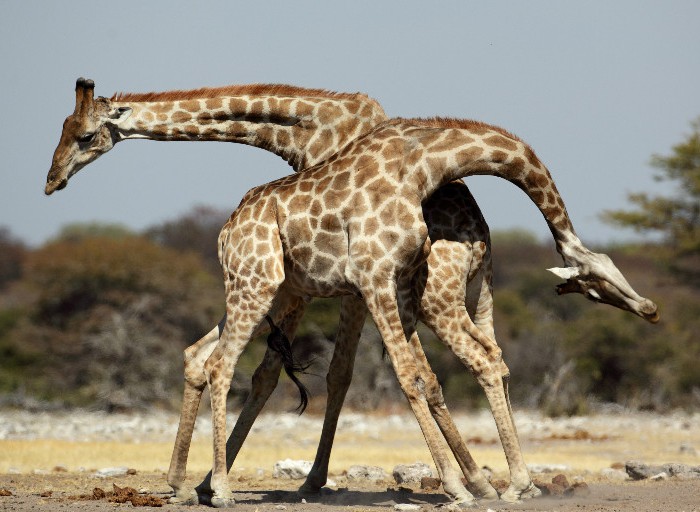Reproducing is a natural instinct hard-wired into an animals brain. Many animals make great sacrifices to ensure that their offspring (and as a result their genes) survive. Sacrifices include pregnancy as this requires a huge investment in energy and can make the female quite vulnerable to attack. Vote now for your favourite sexual reproduction fact from the animals that feature on Fascinating Africa.
Vote for the fact you find most fascinating
Mating in hippos is a brutal affair with the bull forcing the female face down below the surface of the water even snapping at her when she surfaces to breathe.
Research suggests that 74 to 94 % of male giraffe like having sex with one another.
When fully erect an elephant’s penis is s-shaped, measures between 1m and 2m long and weighs 27 kg.
There may be as many as 12 foam-nest tree frog males present at a mating, those that have not been able to mate with the female will simply add their sperm to the mixture of foam and eggs in the hope that they will fertilise some of the 1,200 eggs that she has laid.
The bottom shell (plastron) of the male tortoise is curved. This is so he can position himself closer to the female when he mounts her. Females simply have a flat plastron.
Lions will mate continuously for four days and nights averaging 2.2 times an hour with each coupling lasting approximately 20 seconds. For every cub that reaches the age of one the mother would have mated 3,000 times.
A female elephant typically conceives at ten to eleven years old. This likely to be traumatic as the bull could very well be five times her size.
Male lions become exhausted after three to four days of mating and begin to lose interest which gives other males the opportunity to takeover.
Bushveld rain frogs have rounded bodies, short legs and the female is larger than the male, all of which make mating difficult. The solution is for the female to secrete a glue-like substance which secures the male in position. They are stuck like this until the female secretes a reversing agent.




